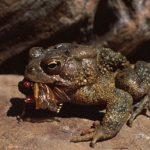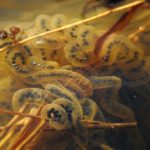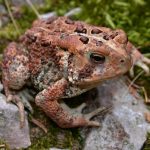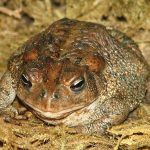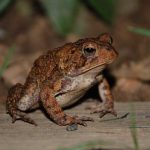American Toad
American toad is a species of toad found in Canada and the eastern United States. The species is generally nocturnal spending daytime under cover. The toad produces toxins in glands located behind the eyes to deter predators. There are three subspecies of this species.
| Kingdom | Animalia |
| Phylum | Chordata |
| Class | Amphibia |
| Order | Anura |
| Family | Bufonidae |
| Genus | Anaxyrus |
| Scientific Name | Anaxyrus americanus |
| Size | 5 to 10.2 cm (1.97 to 4.02 in) |
| Color | Color ranges from tan, brown, reddish-brown, or olive green with dark round spots on the back; light white to yellow belly with black or gray spots |
| Distribution | Eastern United States (Minnesota, New England, northeastern Louisiana, western Mississippi, northern Alabama, Georgia, western North and South Carolina) and Canada |
| Habitat | Forests, mountain areas, parks, yards, farmland, prairies |
| Diet | Insects, spiders, slugs, earthworms, other invertebrates |
| Hibernation Fact | Hibernate during winter months |
| Predators | Snakes, birds, raccoons |
| Breeding Season | March to July |
| Mode of Reproduction | Oviparous (egg laying) |
| Clutch Size | 4000 to 8000 eggs |
| Incubation Period | 2 to 14 days |
| Metamorphosis Period | 50 to 65 days |
| Reproductive Age | 2 to 3 years of age |
| Average Lifespan | In wild : Around 10 years In captivity: Up to 36 years |
| IUCN Conservation Status | Least Concern |
American Toad Pictures Gallery
- American Toad Diet
- American Toad Egg Mass
- American Toad Eggs
- American Toad Habitat
- American Toad Images
- American Toad Photos
- American Toad Pictures
- American Toad Poisonous
- American Toad Range
- American Toad Tadpoles
- American Toad
- American Toads
- Baby American Toad
- Female American Toad
- Pet American Toad
- The American Toad
